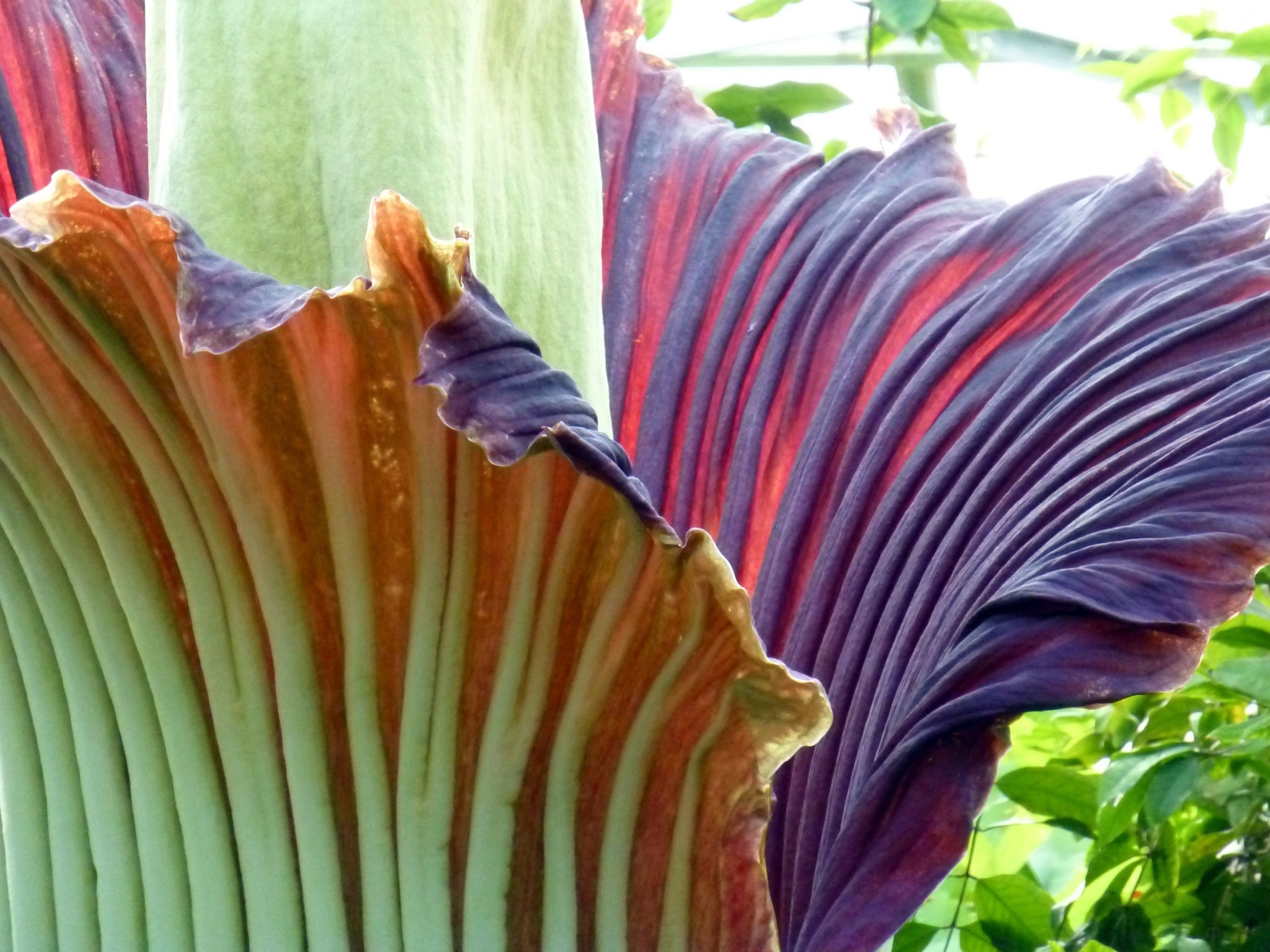
Amorphophallus titanum
Background and history
An unpredictable plant
-
The flowering of the Amorphophallus titanum (titan arum) at the Royal Botanic Garden Edinburgh in 2015 was a first for Scotland. Since then, the 22 year old corm is showing an unusual persistence and we have had another three flowers, most recently in June 2022.
The world’s largest bloom
The species originates in Sumatra and famously has one of the largest flowering structures of any plant.
Everything about Amorphophallus titanum is big. The inflorescence stands three metres tall, whilst the single leaf reaches a height of six metres and a spread of five metres, resembling a small tree rather than the herbaceous plant that it actually is.
When the Garden received the corm from Hortus Botanicus in Leiden in 2003, it was about the size of an orange, but by 2010 it weighed in at a record breaking 153.95 kg - about the same weight as two fully grown adults!
A botanical curiosity
First described to western audiences in 1878 by the Italian botanist Odoardo Beccari (1843-1920), Amorphophallus titanum has been a botanical curiosity ever since.
Amorphophallus titanum attracts pollinators through a pungent smell reminiscent of rotting flesh. During full bloom, certain parts of the inflorescence heat up by 10ºC during the night. This heat coincides with the opening of first the female and then the male flowers, and helps to spread the smell and attract the carrion flies and beetles that act as pollinators.
Heating of the inflorescence, by a process called thermogenesis, is a feature of the arum family – Araceae. More familiar members of the family that also heat up, are the native cuckoo pint or lords-and-ladies, Arum maculatum, and the popular houseplant known as the Swiss cheese plant, Monstera deliciosa.
Nurturing the Amorphophallus
Successfully bringing the Amorphophallus titanum to the point of flowering has involved replicating the conditions it would experience in the rain forest of Sumatra.
The Lowland Tropics glasshouse provides the required high humidity and temperatures. During the day, temperatures are between 21-25ºC, and by night above a minimum of 19ºC. The 500 litre Air-pot is watered with a high potash liquid fertilizer, i.e. tomato fertilizer, and care is taken to avoid waterlogged conditions as this could cause the corm to rot.
Often, an Amophophallus titanum will die after flowering, but with careful cultivation, a plant can continue to produce more leaves or flowers in subsequent years.
Endangered in the wild
Amorphophallus titanum is classified as Endangered (EN) on the 1997 International Union for Conservation of Nature (IUCN) Red List of Threatened Plants, due to natural habitat loss. It is currently only known from the Bukit Barisan range of mountains in West Sumatra.
Sumatra is a part of the Garden’s ongoing research in Southeast Asia on diverse tropical plant families including the gingers (Zingiberaceae), begonias (Begoniaceae), Gesneriaceae, and tropical trees in the Sapotaceae and Malvaceae.
Photo Gallery
-
Info
Two titan arum in Sumatra, Indonesia (ca. 1900-40); one in leaf, which can reach up to 6 metres (20 ft) tall, and one in bloom. -
Info
Italian botanist Edoardi Beccari (1843-1920) -
Info
Leaf - Curtis's Botanical Magazine volume of 1891 (plates 7153) - plates drawn by Matilda Smith -
Info
Seed: Curtis's Botanical Magazine volume of 1891 (plates 7154) - plates drawn by Matilda Smith. -
Info
West Sumatra, home of the Amorphophallus titanum -
Info
Thermal image of titan arum taken with FLIR SC620 camera showing temperature gradients caused by sunlight -
Info
1878 specimen in Sumatra
Find out more
Botanics Recommends
-
Explore our range of unique gifts and more. Every purchase supports the Garden.
-
Explore our unique venues, suitable for every occasion
-
Discover a range of books inspired by the RBGE's work and collections
-
Cultivate your curiosity with our programme of courses for all ages and interests.
